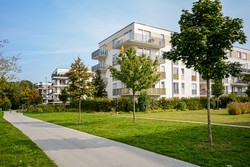Environmentally friendly urban planning
By mimicking the energy flow in an ecosystem, urban metabolism considers a city as an entity with distinguishable flows of energy and materials. This is enabled by recent advances in biophysical sciences that have allowed the estimation of energy, water, carbon and pollutants fluxes within a city. However, the limited exchange of information among biophysical scientists and stakeholders such as planners, architects and engineers hampers the effective utilisation of these methods. The EU-funded BRIDGE(opens in new window) (Sustainable urban planning decision support accounting for urban metabolism) project addressed this challenge. The consortium utilised tools and methodologies to effectively analyse the energy, water, carbon and pollutant components of a city's metabolism and determine their impact on the environment. The cities of Athens, Firenze, Gliwice, Helsinki and London were used as case studies. They selected these cities based on their current and future energy requirements with Helsinki needing energy for heating, Athens for cooling and London to meet its demands as a modern city. Florence, on the other hand, was chosen as an old, heritage city and Gliwice for its extensive urban planning. Several local-scale models – computational fluid dynamics models, and traffic and turbulence scheme models – were implemented to describe over time the different physical flows characterising urban metabolism of the selected case studies. Based on this information and by incorporating the knowledge and expertise of local decision makers, project partners evaluated urban planning alternatives, based on environmental and socioeconomic indicators, examining also their robustness to future scenarios concerning energy, economy and climate. BRIDGE’s main achievements were to link urban metabolism with urban climate and urban planning; and to develop a decision support system (DSS) that reflected the multidimensional nature of urban metabolism in indicators that were easily understood by urban planners. More specifically, the DSS integrated biophysical observations with socio-economic issues, enabling end-users to evaluate several urban planning scenarios based on their identification of planning objectives. In this way, sustainable planning objectives can be based on quantitative assessments of urban metabolism components. Papers have been published on Understanding Urban Metabolism(opens in new window) and Sustainable urban metabolism as a link between bio-physical sciences and urban planning(opens in new window).







